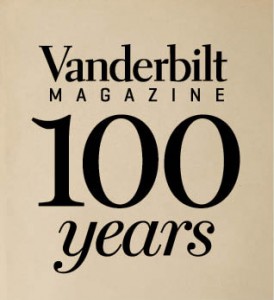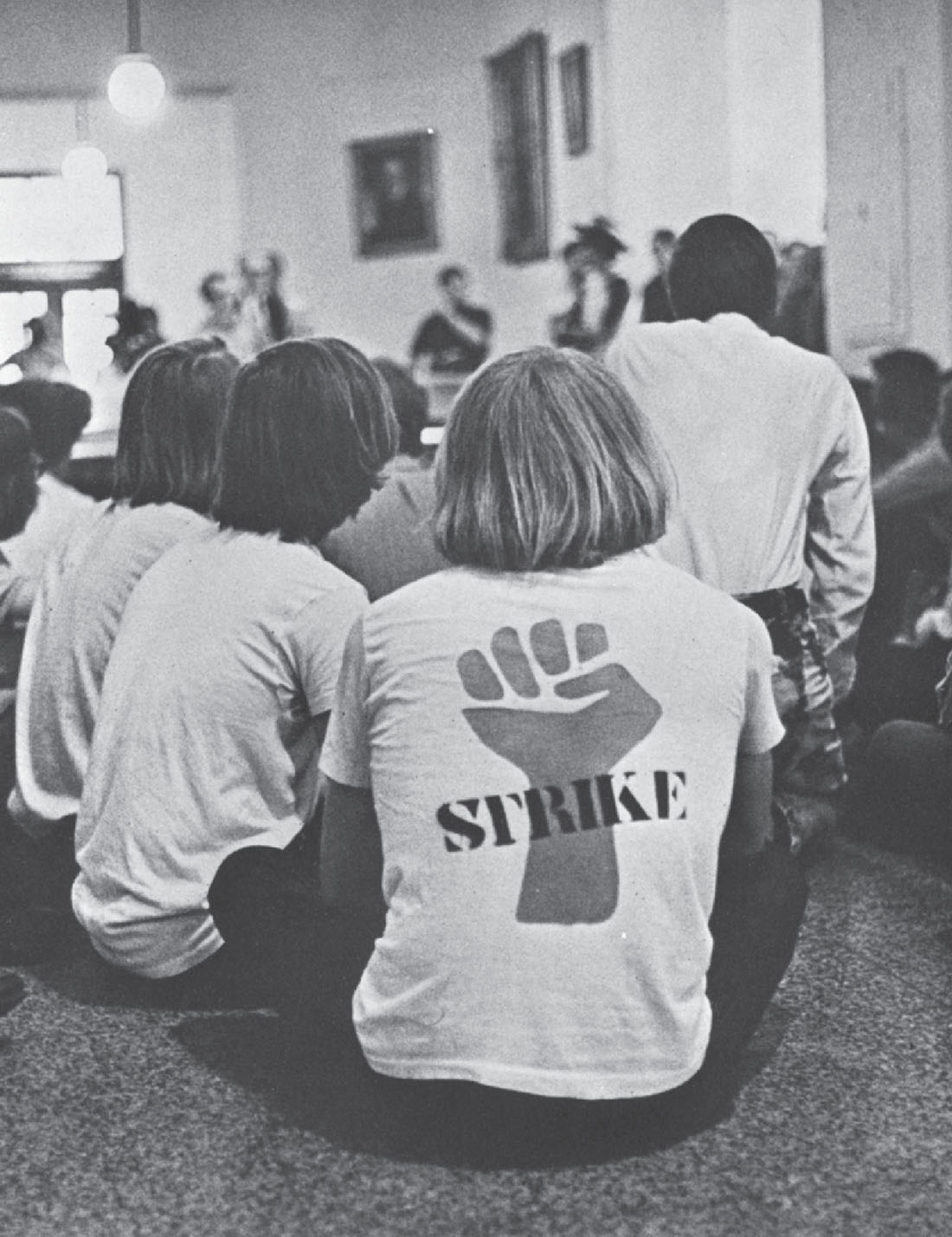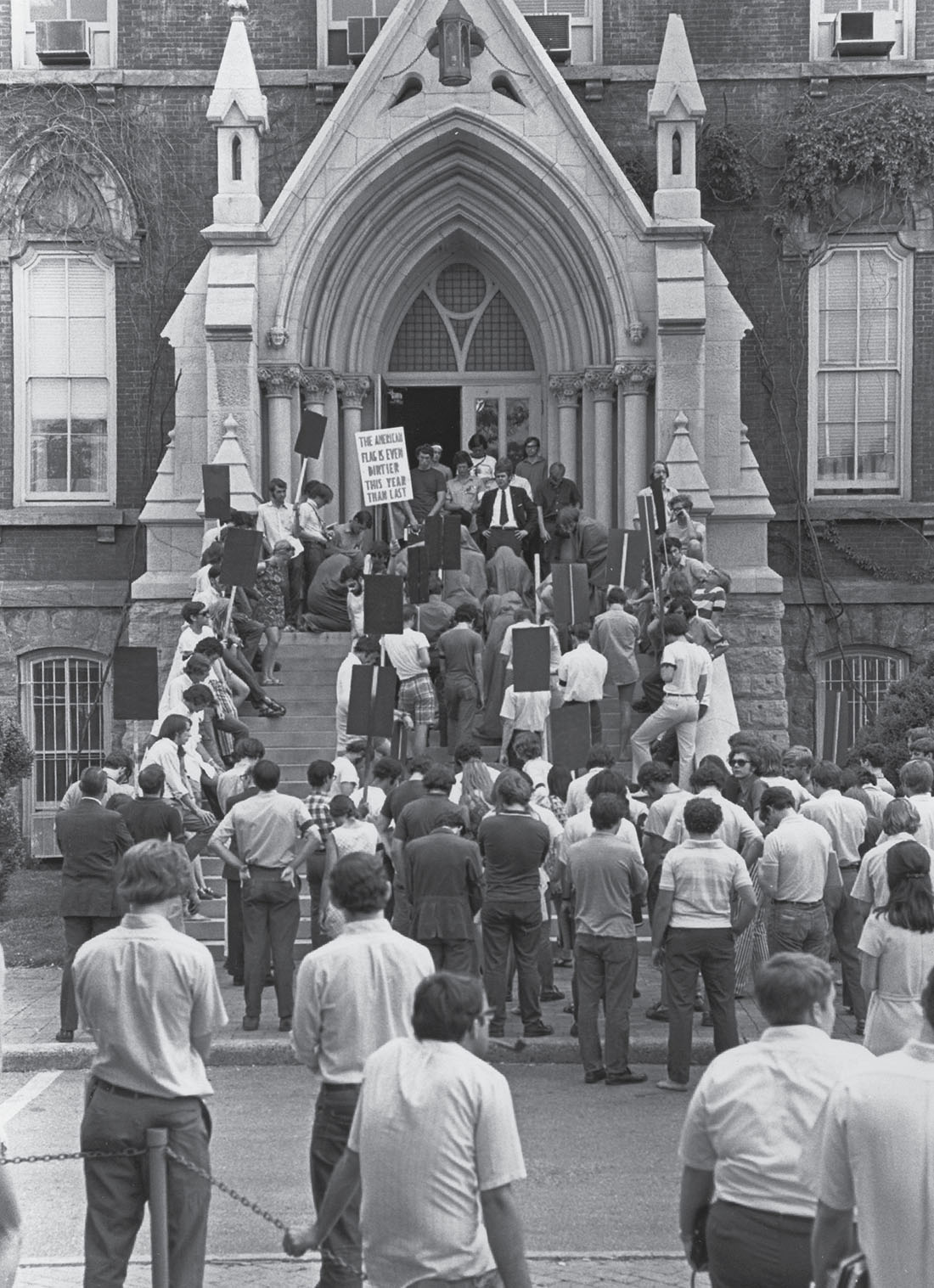Reprinted from the May/June 1970 issue of the Vanderbilt Alumnus
By John Donaldson [BA’70]

May at Vanderbilt is traditionally remembered for many things—fine, warm spring days, walks to Centennial Park, music of any sort coming from open dorm windows, sunbathing on the roof of the quad, and many other things symptomatic of a generally relaxed enjoyment of the splendor of spring, along with the slow, tedious task of preparing for “one more great push,” i.e., EXAMS.
However, May this year will be remembered by the students, faculty and administration for few, if any, of these things; for the early days of May witnessed two great political and moral developments which tore the nation’s campuses to the verge of, and in some cases beyond the verge of, chaos and destruction.
No article written could capture entirely the impact which Nixon’s Cambodian gamble and the deaths of four Kent State students had upon the Vanderbilt students. This article does not pretend to do so, but rather it hopes to mirror the concrete steps which certain groups and individuals took to express their points of view.
Generally speaking, Vanderbilt—in typical fashion—took it in stride. No National Guard units muddied their boots on dear old VU soil, neither did the ROTC building succumb to flames as many of its prototypes did. There were no dramatic confrontations between shouting, irrational mobs of students and police, and only once did our school’s name make the national news wire.
It is important to note, however, that Vanderbilt students did react, violently at times, and that there were confrontations—but these were largely within each student as he tried to grasp the full implications of the events.
To a large extent, this was achieved by a very simple process. When the news of Nixon’s decision to send troops into Cambodia broke, those students who followed political activities closely and were aligned or in any way connected with a point of view registered a sort of “reserved concern,” which ranged anywhere from a scowl on the face to near-open indignation and rage. About 400 students marched along the sidewalk from the campus to the Federal Office Building downtown to express their opposition to the expansion of the war. About 1,000 signed a petition protesting the move into Cambodia.
When the Kent State deaths were reported in the papers, those groups to left or right quickly “radicalized.” As usual, this left the bulk of the University community in the middle—some unconcerned, some undecided, and some leaning one way or the other.
It was quickly decided by some of the students that there must be some open, visual, widescale demonstration of the concern which students felt toward Cambodia and Kent State. Thus, on May 6, an event occurred on Neely lawn that was occurring at campuses all over the country—students and faculty members met and quietly listened to several of their number express their feelings toward the war, the deaths, and the events scheduled for the next day—a general one-day walkout of classes.
Significantly, no speaker attempted to stir the minds and imaginations of the crowd—they realized that the emotion was already there. No one preached destruction or violence. Several stressed that this was to be a walkout towards peace, not away from anything. All urged everyone to participate, to listen, and to (perhaps) learn.
These points were stressed during the workshops which were conducted all day May 7. No one was forced to cut classes and attend, and, though many attended, a great many did not—and conducted “business as usual.”
Chancellor Heard Goes to Washington
The next few days brought little comfort to the students, but on May 8 there was an event of particular note. A meeting of the University was called in Neely Auditorium. To a packed audience, Chancellor Heard announced that he was going to accept the challenging position offered him by President Nixon to head a special University Communications Committee, to, as Chancellor Heard put it, help present to the administration the views and sentiments of the campuses across the country—not the other way around.” He got a standing ovation, but some nevertheless felt great distrust of Nixon’s motives in appointing him.
At the same meeting, Dean Walter Harrelson of the Divinity School read some resolutions of the faculty of that school calling upon Congress to withdraw “financial support for the wars in Indochina,” calling upon the President and Vice President to “cease from inflammatory and irresponsible generalizations about American students, such as the designation of dissenting students as ‘bums’ or ‘effete intellectual snobs,’” and calling for restraint in the use of police in cases of campus disorders.

A sit-in on the following Monday was organized to support a petition to have Chancellor Heard leave his new position in Washington. This group of perhaps 50 people, positioned on the floor of Kirkland Hall, argued that Nixon’s appointment to increase communication was a ploy to sidetrack his opponents from the major fact that there was a difference of goals that would exist even with ideal communication. This group saw Chancellor Heard as well-meaning, but ineffectual; as a “crutch” for Nixon. The Chancellor, who was by then in Washington, replied in a letter on Wednesday reaffirming his goals and stating that he intended to see them through to the best of his ability.
The situation around campus remained uneasy, as groups of students attacked and defended and tried to understand Nixon’s policies. Some students went into the community to circulate petitions; some of the Divinity School students held a prayer vigil on the steps of the Tennessee State Capitol and either spoke or distributed leaflets at many local churches to express their concern about the events.
Opposition to ROTC
From the start, the ROTC had been the target for many of the students outraged by this newest military adventure. Objection to ROTC’s “favored position” on campus had been around before, but Cambodia seemed to give anti-ROTC forces new life. Obviously, the University was taking no chances on any overt action and posted a guard of campus police on both buildings around the clock. It proved to be unnecessary, as anti-ROTC forces decided that a prime goal was to dramatize their program through a non-disruptive demonstration.
This demonstration was carried out the next Thursday, May 14, at the annual Spring Naval ROTC review on Neely lawn. Several draped “grim-reaper” figures appeared with a coffin marked “ROTC Coffin” and positioned themselves on the West End Avenue side of the field. They were joined by several others, perhaps 50 to 100, who lent vocal support throughout the review. Afterwards, the coffin was carried to Kirkland Hall where a prayer was said for the war dead by Chaplain Beverly Asbury.
A Demonstration for the President
An important point was made during these times by Charles Stowe, standing before a crowd of students and differentiating between “presentation and confrontation.” For in no way were the actions of the two-week period which began with the initial impact of the invasion of Cambodia and ended with the NROTC review to be construed as “confrontation.” Both sides used methods that were non-disruptive and intended to present a point of view.
On Wednesday, May 13, a group of students under the leadership of Stowe, a junior from Darien, Connecticut, released the first formal statement of support for the President at a press conference in Alumni Hall. Stowe, speaking in front of an American flag, announced plans to demonstrate that support.

The next day, prior to the NROTC review, Stowe’s group, called Concerned Students, held a rally in which they presented speakers from the student body and faculty supporting Nixon’s policy in Cambodia. “We believe in achieving Peace through Policy, not Peace through Appeasement,” said Stowe. With such phrases as the one uttered by Dr. Phillip Rollinson of the English department—“If a house has termites, you shouldn’t burn the whole house down”—they attempted to reply to the similar rally held the week before. Especially dramatic was the appearance of wounded Vietnam veteran Tom Martin who, speaking from a wheelchair, told fellow students, “Now at last the majority of Americans are recognizing the need to speak out … .”
Significant to note throughout these rallies and demonstrations was that no speaker on either side was shouted down. None of the grandstanding that was in evidence a couple of years ago when avowed communists spoke on campus occurred this time. Flags were worn and waved in support of speakers, not against speakers who spoke out against the government. No one threw a punch at a demonstrator, though many had the urge. When the Radical Coalition organized the demonstration against ROTC, they duly registered it with the proper authorities.
When the question of suspension of exams to enable students to work for their beliefs arose, the administration responded with sensitivity, leaving it to the individual student and his professor.
This sensitivity to the emotions and beliefs of Vanderbilt students by the administration has not been easy in the past four years, with violent social upheaval affecting the campus—as it has across the nation. But the fact that communications has never totally been lacking, and that there has been a growing maturity on the part of the students, has resulted in an atmosphere at Vanderbilt where we can sit down together and gain something constructive out of even a situation so profoundly emotional as the events of those early days in May.